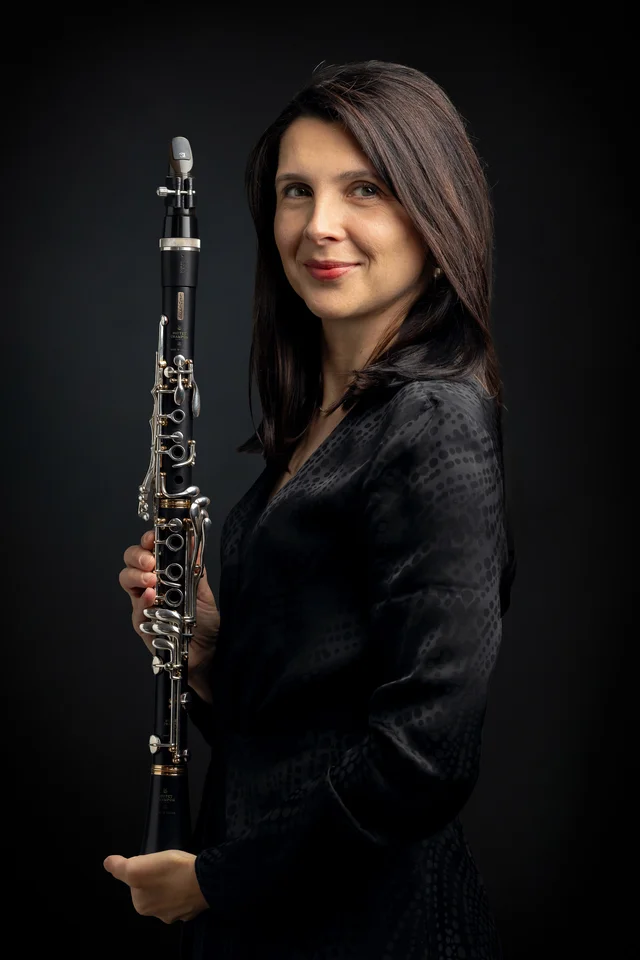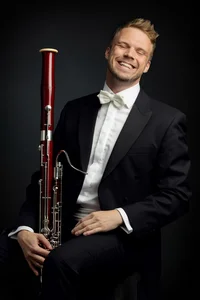Benjamin Herzog Richard Strauss's Concertino tells a kind of ‹Beauty and the Beast› story. Strauss spoke of a bear and a princess. Do you see it that way too: beautiful clarinet, clumsy bassoon?
Rossana Rossignoli At least in this piece: yes. But the bassoon can also be much sweeter and more nostalgic than a clarinet. In any case, I will enjoy being a princess for once.
Benedikt Schobel This is most obvious at the very beginning, where the clarinet has these wonderful lyrical cantilenas and the bassoon then abruptly interrupts the idyll in the low register. But by the romantic second movement at the latest, I also get my money's worth melodically.
BH And in real orchestral life: is the clarinet always the ‹princess› and the bassoon the ‹bear›?
RR The beauty of our instruments is that they can be anything! And that's what's interesting about our profession. Finding the sound, the character that suits the piece in question. Sometimes we are even asked to sound ugly. I will always remember Schostakowitsch's 15th Symphony, when the conductor said to me: «Here you are the devil!»
BS Of course there are stereotypes about instruments, but good composers only use them to a certain extent. If the bassoon were always clumsy, Stravinsky's Le sacre du printemps would not have such a wonderful beginning. And if clarinets were only lyrical, Strauss' protagonist in Till Eulenspiegel would never be executed.
BH You can also think of the whole thing as a cat-and-mouse game, or better yet, as ‹scenes from a marriage›. Richard Strauss often incorporated autobiographical elements into his music. How do you see it?
RR That's right, these themes recur again and again in his music. But the dialogue between the clarinet and bassoon in the Concertino also reflects exactly the relationship that Benedikt and I have. We are very good colleagues and friends: a perfect stage couple. We often agree and both want to be right.
BS That was indeed a theme that Strauss repeatedly explored, as can be heard in the Sinfonia Domestica or in the opera Intermezzo. The comparison is obvious here, of course, with two characters who are very different at the beginning but who grow closer and learn to appreciate each other over the course of the work.
BH The beauty of it is that in the end, the two find harmony in the rondo movement! Do the clarinet and bassoon also harmonize technically? Is it easy to play with each other?
RR The clarinet and bassoon have a timbre that blends very well. There are many passages where they play together. But just as often, these two instruments are chosen by composers to embody very different characters.
BS We also sit right next to each other in the orchestra. Clarinet and bassoon is a timbre often chosen by many composers. The two instruments blend well, but retain their character.
BH And how do you harmonize personally?
RR There is more than one reason why I am happy to be in the Sinfonieorchester Basel, but Benedikt is certainly one of the main ones. There is a lot of understanding between us. We often just look at each other to understand what we should do. And then—whether in rehearsals or concerts—we always have a lot of fun!
BS Having such a technically accomplished and musically moving colleague is something I consider to be the greatest joy in my profession. After fourteen years, it's often enough for Rossana to point to a passage and say, «Let's do something special here», and I know what she has in mind at the first attempt.
Interview: Benjamin Herzog

